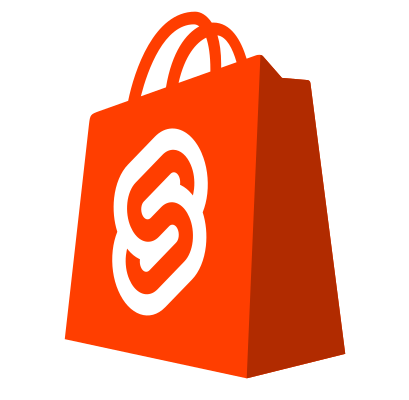Anatomie of a Liquivelte Component
Anatomie of a liquivelte component is very similar to a Svelte Component with a few exceptions. Template part is mostly liquid and should be valid.
Meaning 2 contexts should match, for ex if you have a product variable in product page template, you also should have product imported into js context because Svelte will do some renders with the data we provide.
All the point here is to get SSR html via liquid and Svelte hydrates the markup when page loads.
Differences from Svelte
Expressions are liquid like but always with a hyphen
For ex in a svelte component you would output an expression like this.
<div> { count } </div>
In liquivelte you do it like liquid but always with hyphens.
<div > {{- count -}} </div>
Why hyphens are necessary?
The reason for the hyphens is {{ ... }} is a valid svelte expression outputting an object. You can use svelte expressions as well if you do not care about the initial rendering of that part.
What happens if I just use { ... }?
Nothing, when page loads liquid will output { ... } without any evaluation and then Svelte will replace it with evaluated value when hydrating. If it is something that is not visible on load, it does not matter. Actually if you are going for lets say a popup that opens on click, you can import that as a Svelte component and pass values to it from props.
Expressions have some liquid filters available
Expressions that are with hyphens are subject to a transformation, which also transforms liquid filters to function calls of a special import liquid. Example:
<div class="text-theme text-base">
{{- product.price | money -}}
</div>
gets transformed into
<div class="text-theme text-base">
{ liquid.money(product.price) }
</div>
Control flow tags are liquid like
{% if section.settings.logo != blank %}
<img src="{{- section.settings.logo -}}" alt="Store logo" />
{% endif %}
This will transform into:
{#if section.settings.logo != undefined }
<img src="{{- section.settings.logo -}}" alt="Store logo" />
{/if}
{% liquid ... %} at the top of the component
This liquid code will end up in liquid part only. For example we can calculate something in liquid to import later.
{% liquid
if block
assign settings = block.settings
else
assign settings = section.settings
endif
%}
<script>
import settings from 'theme';
import section.blocks from 'theme';
</script>
<style>
div {
display: block;
}
.product-card {
background-color: #ddd;
}
</style>
<div class="product-card">
{% if product.available %}
<PBadge> In Stock </PBadge>
{% endif %}
</div>
Import variables from 'theme'
If you import something from 'theme', it will output that liquid variable to page with | json filter and pass it to Svelte when initializing the component.
Import 2nd depth object properties from 'theme'
Some big objects are not json serializable in Shopify liquid. For example lets say section, you can import section.settings instead of section. However defining section in the javascript context is on you.
For example:
<script>
import section.settings from 'theme';
</script>
Will throw an error because section is not defined. Do this instead:
<script>
const section = {};
import section.settings from 'theme';
</script>
 Liquivelte | Docs
Liquivelte | Docs